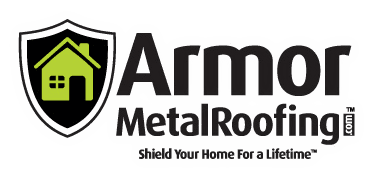Metal Roofing FAQs
Climate has a big influence on how long a roof will last and so does the pitch of the roof. An asphalt roof can last, on average, anywhere from 12 to 20 years. With its 40 to 60 year lifespan, a metal roof outlasts all other types of roofs.
Generally, an old roof does not have to be removed; the new metal roof can be installed overtop the old one. In some cases, this is not a good idea because there may be damage to the wood under the old roof. We can advise you of the feasibility of installing the new roof over the old for your house. If it turns out that, your roof will not need to be removed then that will save you money as well as saving space in a landfill.
Many people are surprised to learn that metal roofs are lighter than every other type of roof. A metal roof weighs only half the weight of asphalt shingled roof and only a fourth the weight of a shake, slate or concrete tile roof.
Yes, insurance companies like metal roofs. They know that statistically homes with metal roofs sustain less damage from fire and weather. Therefore, the insurance company is less likely to have to pay a claim for roof damage.
On the contrary, because metal roofs have to be replaced less often and save money on energy and insurance premiums, homebuyers look favorably on houses with metal roofs.
Anyone who has stood in an old barn with a corrugated steel roof knows how incredible noisy it can be but a metal roof on a home is different. The combination of a solid substrate, attic, and insulation muffle the sound to the point that a metal roof is not any noisier in a rain storm than any other type of roof.
This is a big concern for many people, but as counter-intuitive as it may seem, a metal roof is no more likely to be struck by lightning than other types of roofs. Lightning seeks out the highest point regardless of material. When lightning does strike a metal roof, the charge is dissipated thus reducing the chance of fire. Additionally metal roofs are noncombustible.
Metal roofs do well in hail-prone areas and sustain less damage than other roofing materials. While other materials can break, or tear-off the worst damage hail can do to a metal roof is cosmetic and is difficult to see unless closely inspected.
Metal roof suffer less damage by high winds than traditionally shingled roofs. Shingles are prone to damage or to being torn from a roof, a metal roof will hold firm.
Metal roofs often contain recycled material and can be recycled after their usefulness has ended. They also save money by reducing energy bills due to their ability to reflect and disperse heat, reducing air conditioning costs. Finally, metal roofing materials, unlike asphalt tiles, do not end up in our landfills. Click here to learn more about the energy saving benefits of a metal roof.
Solar panels work very well with metal roofs. The panels typically last longer than an asphalt-shingled roof. Since a metal roof lasts longer, the homeowner can avoid removing and remounting solar panels, or having to replace them all together, due to the short lifespan of the roof.
With the large variety of metal roofing choices available, your roof can look like every other roof in the neighborhood, if that is what you want. On the other hand, if you want to make a splash and stand out from the crowd you can choose a metal roof that will do that also.
